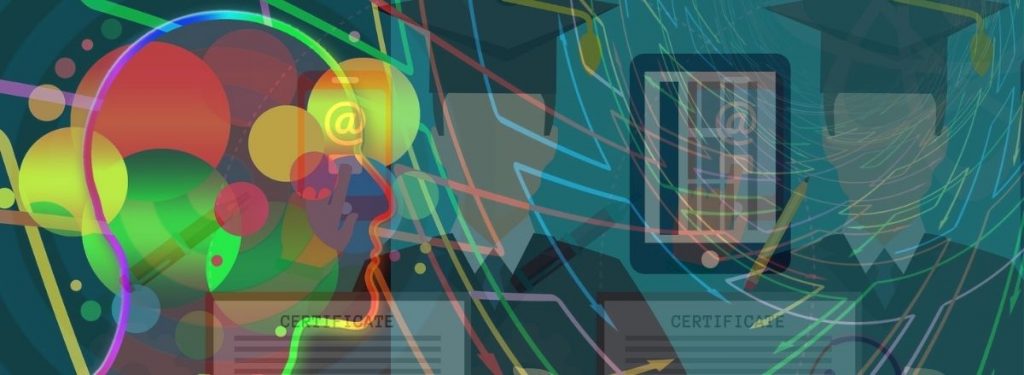In the modern world, continuous innovation and reinvention have become the way of life for any field. The appropriate innovation model for a particular area would depend on several factors. Nick Alchin explores what ‘meaningful innovation’ would look like in education.

Historian Benot Godin recounts the tale that in 1636, Henry Burton, a Church of England minister and Puritan was found guilty of innovating, against King Edwards VI’s earlier Proclamation against Those that Doeth Innovate. Burton had his ears cut and was sentenced to life imprisonment – showing that attitudes to innovation – now a central value of modern society – have utterly transformed over the years
Despite that horror story, social innovation has been going on for centuries, and we are all living the results. One innovation, for example, has been the move to highly specialised work, to everyone’s benefit. That’s not always been true but some of the benefits are vast; author Matt Ridley writes that we sometimes forget, for example that it is possible to work for a fraction of a second so as to be able to afford to turn on an electric lamp for an hour, providing the quantity of light that would have required a whole day’s work if you had to make it yourself by collecting and refining sesame oil or lamb fat to burn in a simple lamp, as much of humanity did in the not so distant past.
Innovation makes this possible; and the modern world could not be built without it. We should pursue meaningful innovation wherever we can. The trick is in the world ‘meaningful’ – because of course in any marketplace of ideas there are some that are not worth following – Adrian Daub writes one of the internet age’s greatest works of collective satire may be the 5,875 Amazon reviews for the Hutzler 571 banana slicer, which mock the mania for buzzy innovative solutions in search of a problem – and the reminder that ‘new is not necessarily better’ is an important one.
I’m always looking at other sectors, because something that works in manufacturing, finance or tech may be perfect for education. Or it may not. The current tech boom seems to have become the model for how many think about innovation – with ‘disruptive innovation’ being the latest iteration of the idea. Now, some things about the tech industry are indeed unprecedented (the technology bit, for instance); others are business as usual (the industry bit, obviously). So it seems to me that not a case of fetishising everything about the technology, but adopting an inquisitive approach. While we can rejoice in the opportunities provided by technology, we also should note that technology may also exacerbate rather than close existing inequalities, or be used to empower extremists. Caveat emptor!
So in that light, we can see the ‘fail fast’ mantra, or Mark Zuckerburg’s famous motto of ‘move fast and break things’ as marketing slogans applying more to software (or arguably, democracy, sadly!) than to the physical world of things and people. Industrial giant General Electric learnt this the hard way in 2016 when the 129 year old company sought to emulate innovation as practiced by great companies like Apple. Facebook and Google (New York Times, 2016). GE executives started making pilgrimages to San Ramon… to soak in the culture. Their marching orders are to try to adapt the digital wizardry and hurry-up habits of Silicon Valley to G.E.’s world of industrial manufacturing. But GE was not delivered to the promised land by emulating innovation as practiced by big tech; in fact it was a dismal failure. Over the following years it wasted billions, and its stock price fell from $27 to around $7 before recovering to $11 today; the CEO left, and digital businesses were sold off’
‘Move fast and break things’ may not, therefore, apply to the design of a new elevator, bridge, aeroplane or surgical procedure. Does it apply to schools? Sectors as different as education, power generation, finance and software deal with things as different as children’s minds, factories, balance sheets and programming languages; there are natural and appropriate differences. So there are questions to ask when we are (frequently) contacted by tech hucksters selling innovation and disruption; or by those in other industries saying we should copy what they are doing just because it works in theirs. Sometimes it works (thank goodness for video conferencing) but often it does not (we really do not want to track students’ typing rates as they work on laptops).
Rather than moving fast and breaking things, schools have been building things. Now building things is usually slower – and a good deal harder – than breaking them, but that’s OK because it’s how innovation generally works. In How Innovation Works, Matt Ridley compellingly draws on examples from agriculture to artificial intelligence to show that in general, we expect too much of an innovation in the first ten years and too little in the first twenty. The reason for this, he suggests, is that until the innovation is made practical, reliable, and affordable – over many years – its promise will remain unfulfilled.
So what does innovation look like in schools?

It could look like a radical change – a school that travels in a boat from country to country is a far cry from traditional schooling at least in location (it would be interesting to know how much beyond that has changed). But even in a traditional setting, I’d suggest that schools have been through a lot of innovation. If you are over 40, then what you will find in many schools today is, I suggest, likely to be very different from what you experienced at school. You will see there has been a quiet revolution as the results of many interlocking innovations – towards student independence; creativity; critical thinking and toward social justice as a central aim for a better world. Much of that will be invisible to the casual observer;
- greater freedom for students
- more focus on growth and less on control
- far greater attention to wellbeing and overall health
- more explicit attention to values and ethics.
- a lot less individual work, and a lot more group work
- more presentations and projects
- discussion of global problems such as sustainability, inequality and development.
- a conceptual focus that seeks to create transferable skills and understandings
- a desire for student agency and input
- a move from punitive to restorative justice
- a move to develop critical skills
- a rebalancing toward mastery/competence from simply knowledge acquisition..
- a rebalancing toward interdisciplinary learning from pure subject specialism
- a move towards personalised over standardised education
There may be no one thing that’s utterly different from the past – good teachers have often touched on these things – but they are explicit, and embedded, and very much the topic of conversation and incremental improvement. That’s not to say we have gotten things completely right; of course there is plenty to do and improve; but these and other things really do add up to a radically improved experience for our students. And that, as much as anything else, is innovation.
Note: This article was originally published in February this year in Nick’s personal blog ‘Education, Schools and Culture’. Please visit his blog for more such profound thoughts and deep insights into many things related to Education.
Bibliography
- Daub, A,. (2020) What Tech Calls Thinking: An Inquiry into the Intellectual Bedrock of Silicon Valley FSG Original.
- Rogers, E. (2003) Diffusion of innovations (5th ed.). New York: Free Press.
- Godin, B (2010) ’Meddle Not With Them That Are Given to Change’: Innovation as Evil Project on the Intellectual History of Innovation Working Paper No. 6
- Lohr, S (2016) GE The 124-year old software start-up New York Times.
- Ridley, M (2020). How Innovation Works and why it Flourishes in Freedom. Harper Books.
- Vinsel, L. and Russell, A. (2020) The Innovation Delusion: How Our Obsession with the New Has Disrupted the Work That Matters Most. Currency Books.
Nick has taught in holistic, values-driven schools schools since 1995, first teaching Theory of Knowledge and Mathematics at UWCSEA Dover and subsequently at the International School of Geneva in Switzerland. After working as Director of IB at Sevenoaks School, UK, and as Dean of Studies at the Aga Khan Academy in Mombasa, Kenya, Nick returned to Singapore to lead a team establishing the UWCSEA East High School in 2012 as the High School Principal. He was appointed Deputy Head of East Campus in 2016 and took up the position of Head of East Campus in January 2021.
IB Chief Assessor for Theory of Knowledge from 2005 to 2010 and Vice Chair of the IB Examining Board from 2007 to 2013, he is a textbook author, IB examiner, workshop leader and consultant who writes and speaks widely on various educational matters.
Nick has a bachelor’s degree in Natural Sciences from Fitzwilliam College, Cambridge, postgraduate certificates in Engineering and Education from Wolfson College, Cambridge and Manchester College, Oxford and a Master’s in Educational Leadership from the Open University.
An avid reader, Nick also enjoys running in the heat, evening walks in the cool and baking bread each weekend. His three children enjoy activities from volleyball to podcasting to drumming, and Ellie, his wife, is Director of Teaching and Learning on Dover Campus. As a family they enjoy travelling across the region (when they can!), sampling new food, and enjoying the great outdoors.

